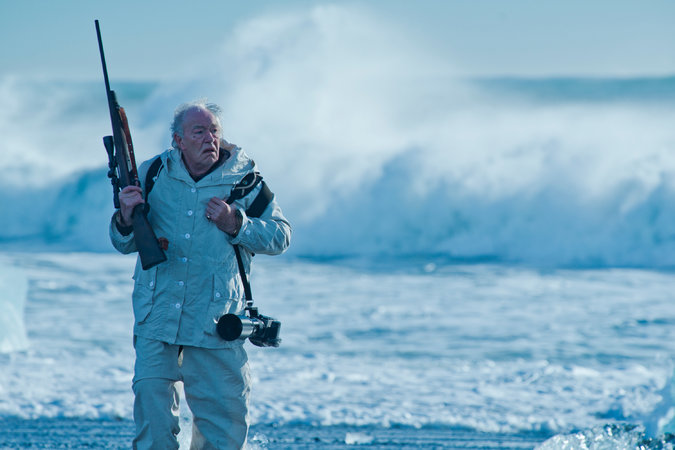 Every fledging network needs that one show to give people a reason to find it, and for Pivot it’s the new drama “Fortitude” (Pivot, 10 p.m.), an original and visually arresting work about mysterious doings in a town in the far corner of
Every fledging network needs that one show to give people a reason to find it, and for Pivot it’s the new drama “Fortitude” (Pivot, 10 p.m.), an original and visually arresting work about mysterious doings in a town in the far corner of Antarctica the Arctic.
It’s one of the few new series for the midseason that stood out at the TV Critics Association winter press tour — a dark and unexpected series about a small town hoping to build its glacier tourism with a new hotel before a series of strange and deadly occurrences happen there.
It’s an impressive cast in the snow, with Stanley Tucci as an outside investigator, Michael Gambon as a photographer and accidental witness, Christopher Eccleston 0f “The Leftovers” as a scientist, Richard Dormer — Beric Dondarrion of “Game of Thrones” as the sheriff who heretofore hunted bears and lost hikers, and Jessica Raine of “Call the Midwife” as a concerned mother.
But there is also a great international cast that includes Veronica Echegui, Luke Treadaway and Sofie Grabel (who led the original Danish version of “The Killing.”
The story is from Simon Donald, who wrote the original UK “Low Winter Sun” and talked about the story’s technical problems at press tour.
“It was important that the story took place somewhere believable and realistic,” Donald says of the striking locale.
There were certain things required of the location for the story, he says. “An important one was we needed permafrost. We needed to find a place where hidden things could emerge from the past and come into the present in a convincing, scientific way. So we looked at all the communities north and south that gave us as many of these ingredients as we could find. And we could really only find one place where the story was going to work, and that’s the archipelago of Svalbard, which is halfway between the north of Norway and the North Pole. And there’s a town there called Longyearbyen, which is the model for Fortitude.”
The tiny town worked because it had a university, Donald said. “There are four departments in this university for arctic science, and they bring researchers from all over the world. So that gave us a scientific it gave us access to scientists who could bring to life some of the issues that are in the show. And it gave us a multinational community.
Also, Longyearbyen has a coal industry that’s just about to die. The place was originally set up by an American entrepreneur called William Longyear. And since about 1901, they’ve been mining coal in Svalbard and they’ve just about finished. It’s just about mined out. And that became a really important ingredient in the story as well, the idea that the industry that sustained this place for 100 years is now fading and they need to find some way to make the place viable. Tourism and scientific research play into that world. So it’s based very much on a real place.
With real polar bears.
“Polar bears is the other thing we really wanted,” Donald said. “Svalbard’s got more polar bears per acre than anywhere else on the planet, 3,000 polar bears to 2,000 people.”
It was an odd corner of Iceland — “way out in the eastern board where the fjords are, so it was quite remote and got extremely cold. And then, bizarrely, for a couple of weeks we were filming, we had no snow, so we ended up having to import snow from London, a company called Snow Business who specialize in snow.”
The sudden lack of natural snow, he said also made them aware of another factor in such corners of the world: “The climate’s changing, but it’s unpredictable.”